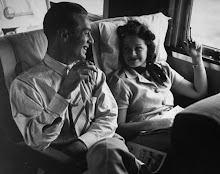The Guerrilla Girls ran an ad on New York buses, condemning the lack of female artists, but the excess of portrayals of nude women in the Metropolitan Museum of Art.
The anarcho-punk band collective, Crass, left anti-consumerist, anti war, and feminist graffiti stencils all over the London underground in the 70s and 80s.
2- By using film, instead of any of the other mediums he could have chosen, Tony Buba can show the whole world that is Braddock. Or at least, he can show people, real people, speaking, and looking, and as they are, with their real opinions and voices. If he had painted a picture, or even taken one, it could not have contained so much real information. A painting is an impression of one thing, that can often be interpreted in varied ways. Even a photo is just a tiny hint of real life, a moment. Whereas with a film about Braddock, it Buba wants to record real people's words with the whole city as a backdrop, there is no better medium for the task.
3- Buba's film is powerful because of its simplicity. He is not making any grand statements himself, and he is not trying to move you at all costs. He is just showing real Braddock and real Braddock people talking about the town. He shows some of the grim squalor around, and it's very effective, but he lets the people and the place speak for themselves. The film is like any number of documentaries, except that many of them tend to have a lot of narration, trying to sum up the whole of events in a few neat words. Buba is relying soley on the people and the place to tell their own story.
4- The "everyday" IS the story in Buba's films. Braddock is one of many towns that had a boom, and are now a shell of their former selves. The story Buda is telling is of the town, and its people. The various people and their stories, the words they use to tell their stories, and the town, often looking shabby and grim in the back round, are almost everything the viewer needs to get the point. A minimum of context, Braddock was something, and now it's this, is all that is needed to effective.
A town like Braddock is a piece of a bigger story; the downfall of towns after the industry that kept that booming is gone. But it also is its own story, which is what's less likely to be told, the story of one, small, getting smaller all the time, and will maybe never be as important to the world as it once was town. The people in it do not tend to be subjects of films, especially simply for living in Braddock.
It's not as if nobody but Buba would have ever thought to do this film, but it is a less likely subject. Buba obviously cared enough to make sure it got told.
5- If I were to make a film about a location, I think I would do something smaller than a whole town. In my family there are three buildings, old and important to us. I would do a film for my family about my family home, our cottage by Lake Erie, and my Grandmother's cabin in Montana. They are 70, 60, and 90 year old respectively. One side of my family or another has owned them for much of their existence, but not for all of it.
These buildings have had so many different people living and staying in them. People have died in them. Many happy vacations took place in them.
I would record their reasons for being built, why they were built the way they were, what they were used for, how they came into my family's ownership, and any of the strange tales I could find related to them. And all of this in relation to the bigger picture of the world outside -- what was happening at this time.
At this point, most of the living subjects to interview would be family members, but to get their stories and thoughts on film would be worthy for posterity. It would be for sake and theirs, really.

No comments:
Post a Comment